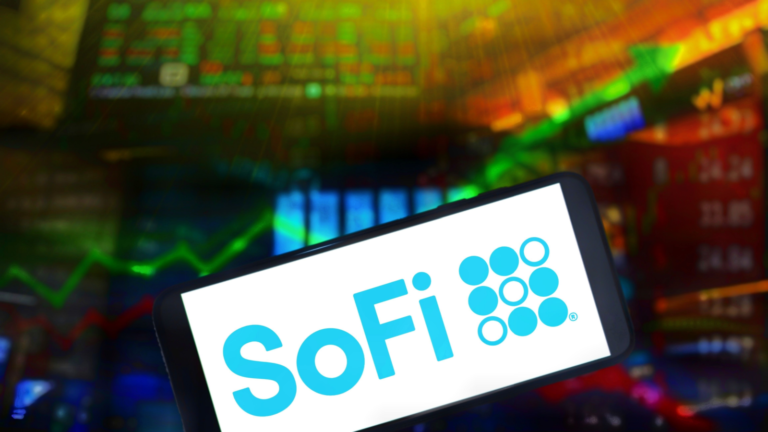When considering a long-term framework, there’s a lot to like about online personal finance company SoFi Technologies (NASDAQ:SOFI). Throughout 2023, the company’s brand equity has steadily grown among U.S. adults. Even better, the message has resonated with its core demographic: high-earning young adults. Since millennials and Generation Z represent the future, the narrative seems compelling for SOFI stock.
Nevertheless, broader economic concerns are starting to weigh on investors. To be fair, the most conspicuous data points such as the soaring equities market belies pensive attitudes. However, amid the optimism are worrying signals. In particular, a wave of high-profile layoffs – especially in the technology space – imposed a sharp counterargument.
In turn, options traders seem pensive about the direction SOFI stock is moving. If you’re looking for a better read on the situation, the smart money and its activities offer a convincing one. Therefore, I am near-term bearish on SoFi Technologies.
SOFI Stock Offers Good News with a Caveat
Recently, my InvestorPlace colleague David Moadel addressed the elephant in the room: student loans.
There’s no denying that SoFi Technologies derives some of its revenue from refinancing student loans. It’s also true that the government is canceling some federal student-loan debt, including a recent discharge of $1.2 billion worth of student-loan debt.
Still, Moadel asked, should this dynamic be a deal breaker for investors of SOFI stock? Not at all, my colleague argues. “The government has been canceling federal student-loan debt for a while now, yet SoFi Technologies still managed to post its first-ever quarterly profit in 2023’s fourth quarter.”
“Not only that, but SoFi’s adjusted net revenue grew 34% year over year to $594.245 million,” Moadel added. That’s a very fair point – SOFI stock is more than just loans. Indeed, the company derives significant revenue from its financial services and tech businesses. These are the exciting growth drivers for the personal finance company.
Nevertheless, the caveat is that the bread and butter of SOFI stock remains lending. While the non-lending component of the business represents more than a third of adjusted net revenue (from its fourth-quarter earnings report), by logical deduction, lending is still the crux of the business.
Unfortunately, this element puts SOFI stock at a higher risk than other lending enterprises. Pulling gross loan and total deposits data from the Q4 print, we can calculate a 123.5% loan-to-deposit ratio. In other words, SoFi has more loans outstanding than deposits it holds.
To be fair, this metric has declined significantly from prior quarters. However, it’s still elevated during an economically tricky environment.
Smart Money Appeared to Have Turned Pensive
When it comes to assessing an investment idea, perusing other people’s opinions is one thing; it’s quite another when you’re talking about smart money transactions. With the former category, you’re dealing with just that – opinions. Regarding the latter, though, you’re assessing actual wagers.
First, I find Barchart’s put/call ratios over forward-looking expiration dates quite fascinating. On the open interest side, the aforementioned ratio stands at 1.23 for derivatives expiring on April 12. Mathematically, that means more traders are transacting put options than calls. However, following this date, the ratio falls below 1, indicating more demand for call options.
On the volume side, the put/call ratio stands at 1.08 for contracts expiring on March 15. Also, on April 12, the ratio is relatively elevated at 0.74.
To be clear, it’s difficult to make definitive statements about options because this arena may feature complex, multi-tiered transactions. However, the elevated interest in put options – which allow the holder to sell the underlying security at the listed strike price – suggests a form of volatility insurance. That is, investors may be buying puts to protect themselves against downside risk.
Moving out to expiration dates beyond April 12, the sentiment appears to lean more optimistically. Therefore, it’s plausible – though not 100% certain – that the smart money may be anticipating near-term headwinds.
Price Targets to Watch
Further, looking at Fintel’s options flow screener – which exclusively focuses on big block transactions likely made by institutions – two trades stood out:
- 17 May 2024 $9 calls sold, with a premium received of $134,139.
- 15 March 2024 $7 puts bought, with a premium paid of $112,800.
Essentially, big money investors may believe that there is an immediate risk that SOFI stock could fall to $7. Further, many in this crowd don’t anticipate that SOFI can reach $9 prior to the May 17 expiration date.
With such big wagers being placed against the company, I think the prudent approach is to wait. That’s not my opinion – that’s just what the smart money is signaling.
On the date of publication, Josh Enomoto did not have (either directly or indirectly) any positions in the securities mentioned in this article. The opinions expressed in this article are those of the writer, subject to the InvestorPlace.com Publishing Guidelines.

